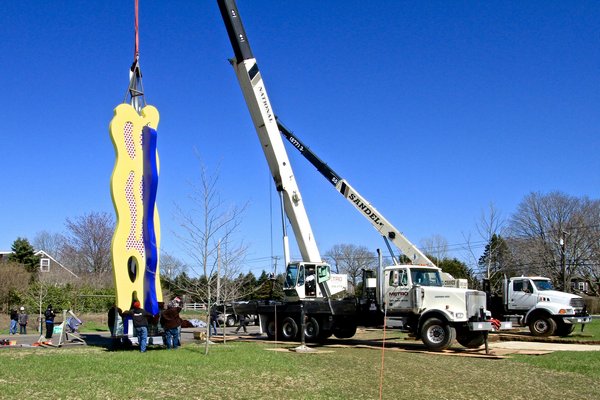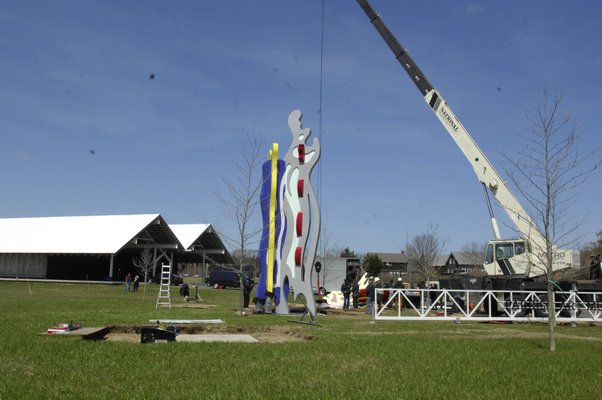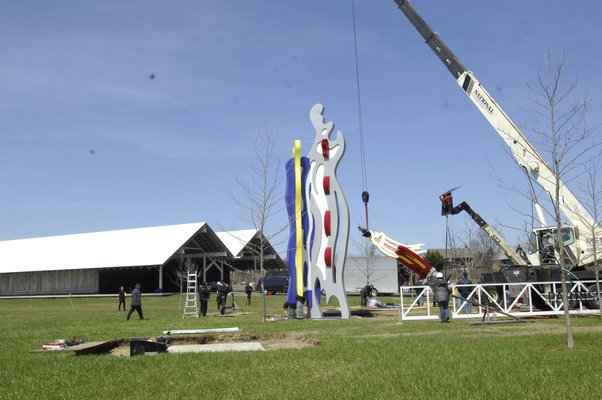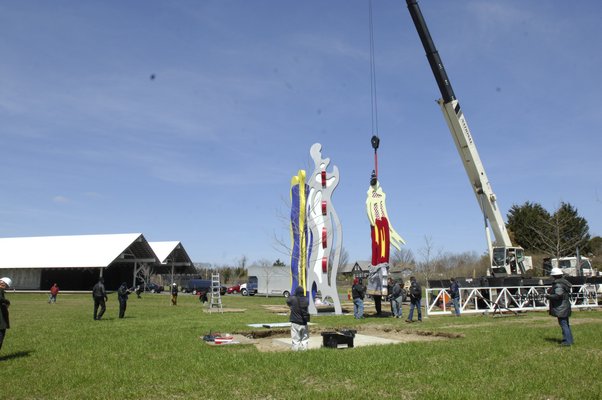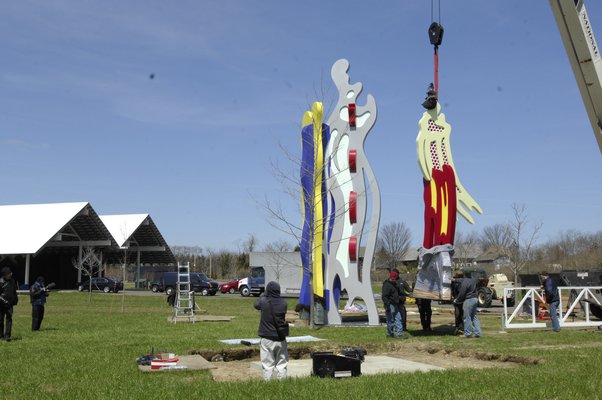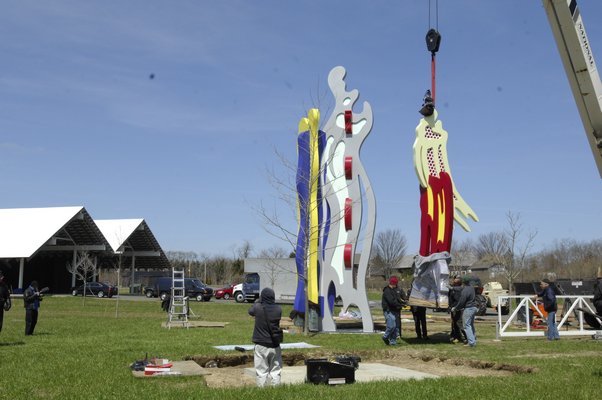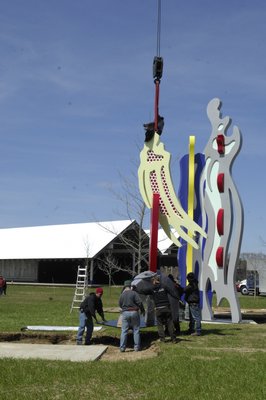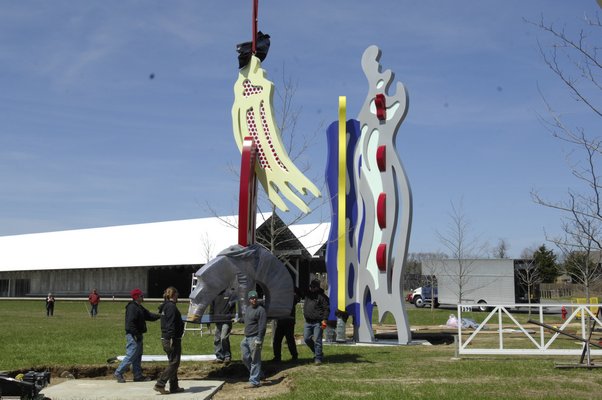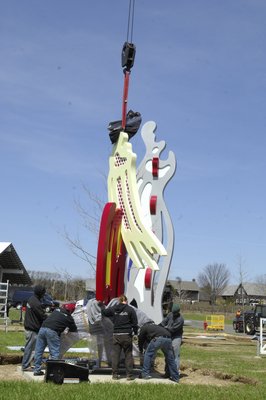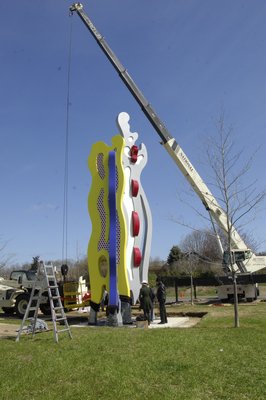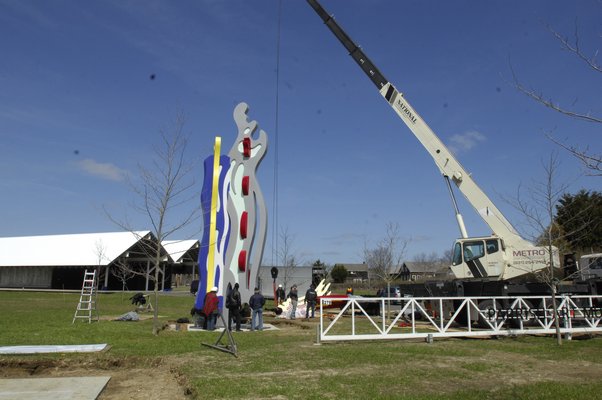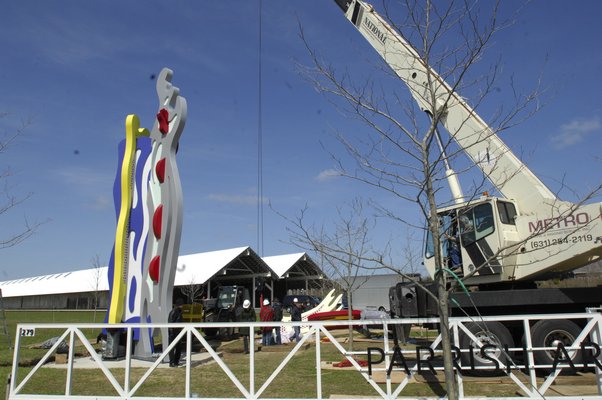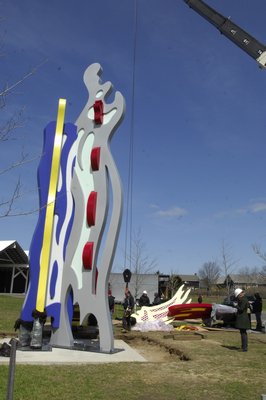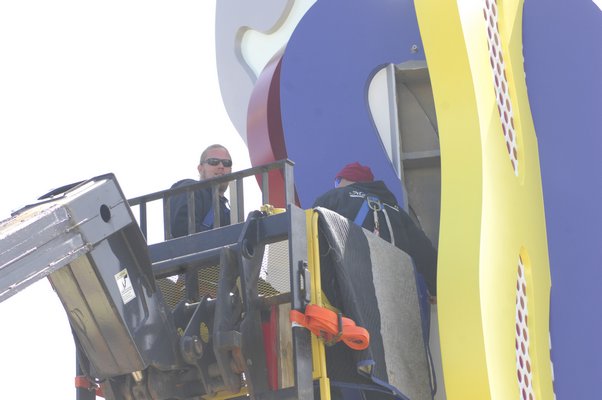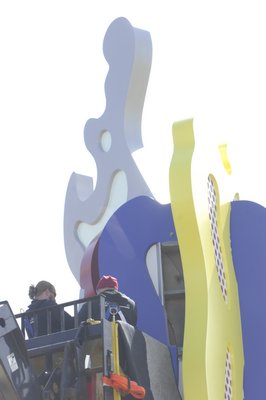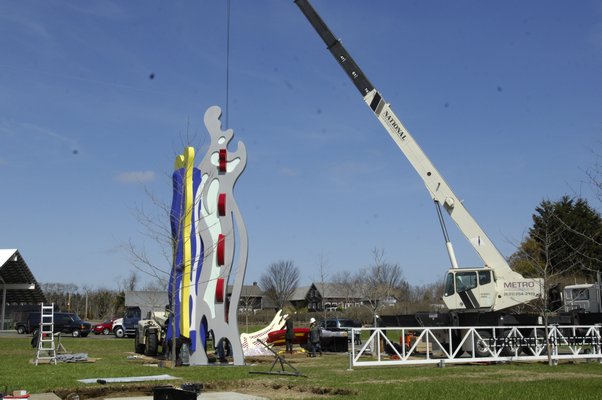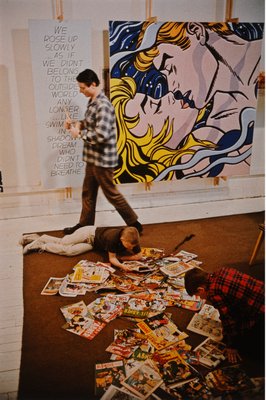On Wednesday, April 16, at 7 a.m., close to 20 crew members descended upon the Parrish grounds with two National cranes and three flatbed trucks transporting a combined 17,000 pounds of painted and fabricated metal that, once constructed, would stand taller than the 32-foot-high Parrish itself, and mark the museum’s entrance on Montauk Highway with a burst of energy and primary color—a foil to the building’s strict architecture and muted tones.
Mr. Lichtenstein—who lived in Southampton with his wife, Dorothy, until his death in 1997—created his first brushstroke piece in the fall of 1965: a flat painting inspired by a comic strip panel, according to Jack Cowart, executive director of the Roy Lichtenstein Foundation. With the advent of public sculpture in the 1960s, the pop artist shifted this particular brushstroke interest into the third dimension with scalable art and fabrications. It gave him a sense of freedom, Mr. Cowart said, while evoking joy and optimism.
By Michelle Trauring   Apr 22, 2014 11:40 AM

